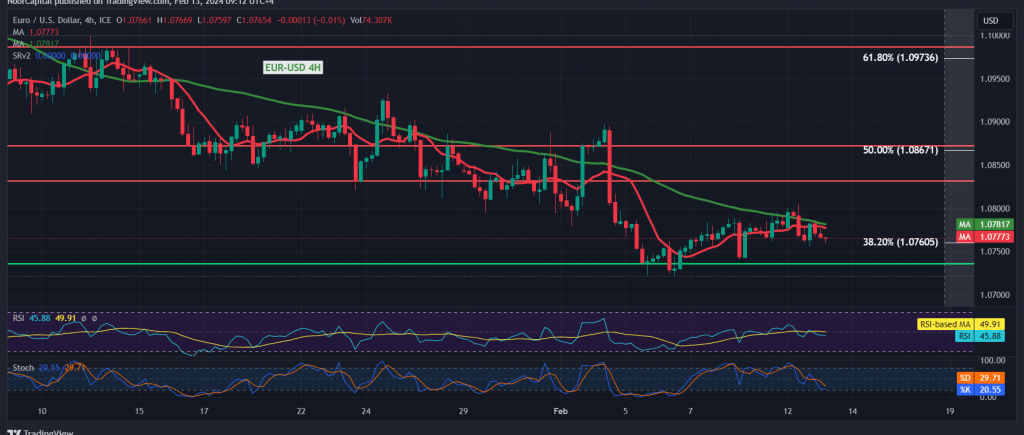Yesterday’s trading session witnessed a mixed performance for the EUR/USD pair, with initial attempts to rally against the US dollar, reaching its highest point near the psychological barrier at 1.0800. However, the pair swiftly reversed course into a downward trend following the release of strong US inflation data, which bolstered the dollar.
From a technical perspective, the psychological resistance at 1.0800 compelled the pair to retreat and retest the 1.0700 level. Previous technical analysis highlighted momentary neutrality due to conflicting signals, emphasizing that breaking below 1.0760 could pave the way for a visit to 1.0715, eventually dropping to 1.0700. The 4-hour chart indicates the pair’s stability below the broken support at 1.0760, now acting as resistance, alongside negative pressure from simple moving averages.
The potential for continued decline remains significant, especially if the pair slips below 1.0700. In such a scenario, the path could lead directly to 1.0675 as the initial target, followed by 1.0635, serving as a key support level, with further downside targets extending towards 1.0575.
Conversely, a break above 1.0775, accompanied by price consolidation, would negate the bearish scenario and signal a potential recovery. Targets in this case include 1.0800 and 1.0835, with further gains potentially reaching 1.0860, marked by the 50.0% Fibonacci retracement level.
Warning:
Today’s market activity may be influenced by high-impact economic data from the British economy, particularly the annual consumer price index and the Bank of England Governor’s speech. Expect heightened price volatility during these announcements, requiring careful consideration and risk management strategies.
Note: Trading on CFDs involves risks. Therefore, all scenarios may be possible. This article is not a recommendation to buy or sell but rather an explanatory reading of the price movement on the chart.
| S1: |
 Noor Trends News, Technical Analysis, Educational Tools and Recommendations
Noor Trends News, Technical Analysis, Educational Tools and Recommendations

